#Shiori Experience
Text
obscure manga enjoyers when two chapters drop within 4 months of each other
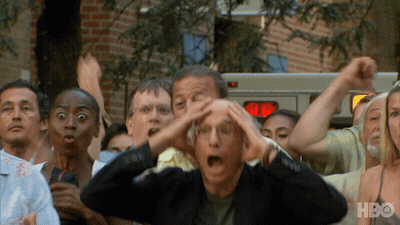
371 notes
·
View notes
Text
Shiori Experience

#kurt cobain#nirvana#manga blog#manga aesthetic#manga#manga black and white#manga edit#manga page#manga panel#manga reader#manga recommendation#anime and manga#music#anime edit#anime manga#shiori experience#jimi hendrix
670 notes
·
View notes
Text
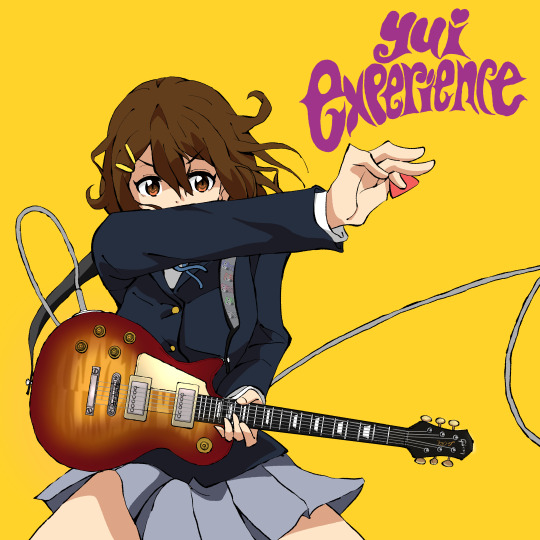
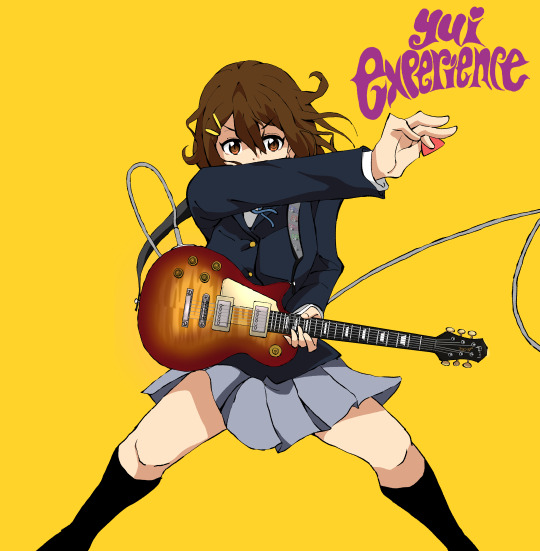
SHIORI EXPERIENCE
しおりさんのポージングかっこよくて、唯ちゃんにもやっていただきました
232 notes
·
View notes
Text

Reading the funny guitar femcel manga
142 notes
·
View notes
Text
Lettering sound effects in Shiori Experience
Hi! I’m Toast, the letterer on #dropout’s English translation of Shiori Experience. This series was my first time doing typesetting, and I’ve learned a lot over the two years I’ve been involved in the project. Each new chapter brings new challenges, and as our team has matured we’ve gotten more ambitious. We recently began translating the comic’s sound effects along with the dialogue, a decision which instantly doubled the size of our workload.
Our most recent release, Chapter 64, was probably the most technically complex chapter we’ve done so far. The sound effects in this chapter were varied and complicated, presenting a number of interesting challenges. Today I thought it would be fun to give y’all a peek behind the curtain, and show the thought process and effort that goes into the adaptation of sound effects in Shiori Experience.
Shiori Experience is a music manga [citation needed], so it isn’t surprising that the sound effects can get pretty complicated. Music manga need to convey not just the sound, but more importantly the impact of a performance, conveying an auditory experience in a totally silent medium. Shiori Experience’s approach to this problem is to make the sound effects semi-diegetic objects. They hang in the air, burst out of crowds, get obscured by foreground objects, and cast shadows on their environment. This is a really cool effect, but also makes converting them from Japanese to English a fucking nightmare.
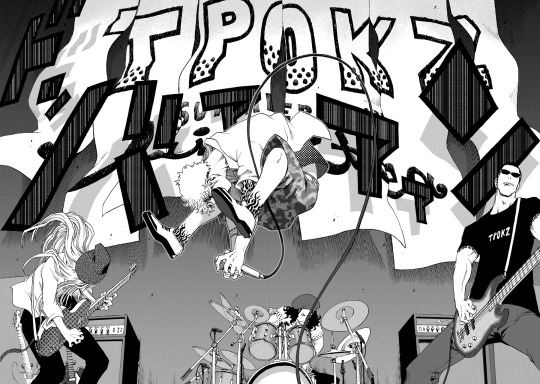
(Look at the shadows)
Shiori Experience is kind of a nightmare
In some ways, lettering for Shiori Experience isn’t actually that difficult. Sound effects in this series are goddamn everywhere and they’re fucking gigantic, but they’re always straightforward. Much like the art of the series, the sound effects are clean and angular, strong dynamic shapes which are easy to parse even if you can’t read the katakana. For a great example of this, look at this sequence from Chapter 64.

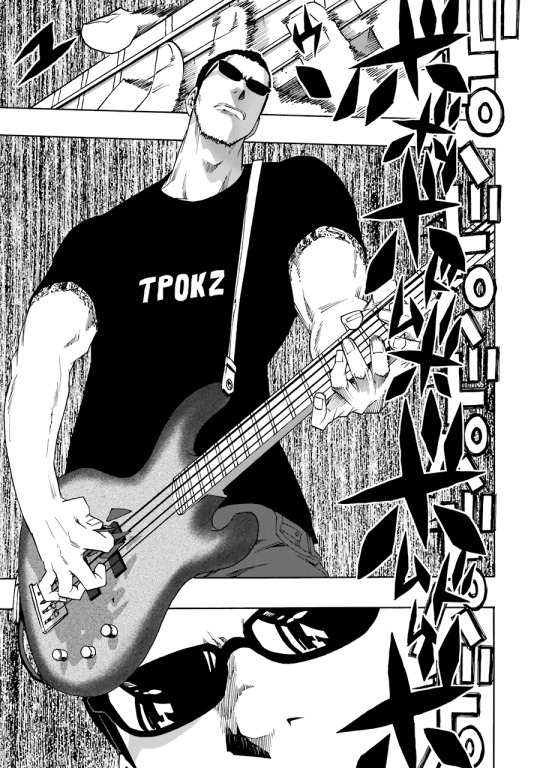

This sequence demonstrates what you can achieve with good lettering. The sound of the band is conveyed perfectly with these visuals. The clear and regular beat of the drums, the dark and energetic bass line, the screaming uncontrollable energy of the electric guitar. We didn’t even bother translating it. We didn’t need to.
But look at the sequence again. In spite of its apparent complexity, there’s only two fonts here, a dynamic block text and an angular brush. Those two fonts represent the vast majority of SFX in Shiori Experience. The rest is just text effects and perspective tricks.
So to convert these sound effects into English, we just have to find equivalent fonts. It took me a while to pin down a set of fonts I was happy with. For the pointy brush font I eventually settled on Jolly Lodger, a brush font with a sort of piratey vibe. I’m still not 100% satisfied with this conversion, it isn’t as pointy as the original, but it’s good enough for now.

And for the big block font I chose Boogaloo. It looks a little thin when it’s on its own like this, but it really bulks up with the right text effects.

Great! We’ve got our fonts! Doing the sound effects should be as simple as erasing the old text and replacing it with the new text, right? Wrong. The nightmare begins.
Different approaches
There are several schools of thought when it comes to lettering manga SFX. One is the "keikkaku means plan" approach. In a translator's note outside the panel, or in plain text near the SFX, describe what the sound is. This is incredibly easy. This is also lame.
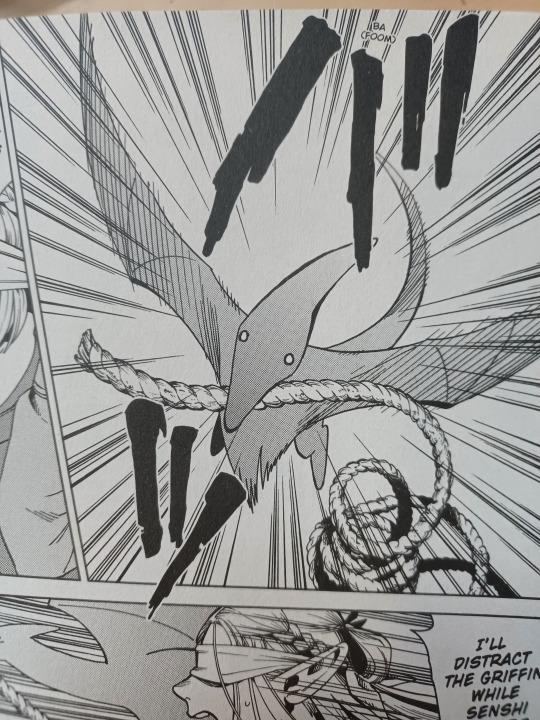
(This is from the official release of Dungeon Meshi. I wouldn’t want to redraw this one either, but like, come on guys.)
Another school of thought is style matching. Similar to the translator’s note approach, but rather than plain text, the translation uses similar text effects to the original SFX. This works fine, but it can create a lot of visual clutter if implemented poorly.

(This is from Drifting Dragons. Please read Drifting Dragons.)
The last approach is full replacement. In this approach, the original SFX is (are you ready for this?) fully replaced by the new SFX.
SFX Redrawing
Replacing a sound effect isn’t as simple as just erasing it. We work with tankoban pages, scans of the Japanese volume release. These files are flattened, with the art and text all on one layer as a single image. We can’t just disable the text. In order to remove the original SFX, we have to redraw them.
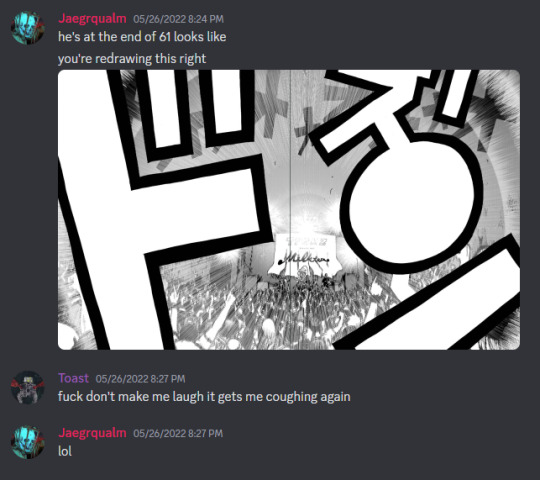
(for context this is from when I had covid)
Redrawing means recreating the art hidden by the original SFX. This is a complex process, requiring a steady hand, sharp eyes, and a lot of guesswork. Since we don’t know what precisely is underneath the original SFX, we have to use context to reconstruct it. The goal of any localization is to make the translation invisible to the reader. The same principle holds true in redrawing. The art we add needs to be invisible, meshing seamlessly with the original artwork.
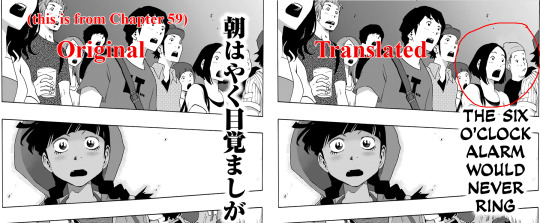
(I made this dude up out of whole cloth. I’m honestly really proud of how he came out.)
#Dropout uses a mix of style matching and full replacement, with the choice between the two being determined by a number of factors. To illustrate that decision-making process, let’s break down the process of redrawing a page of Shiori Experience, specifically the spread across pages 172 and 173 from Chapter 64.
Deciding between Style Match and Full Replacement
This is the original untranslated page, and there’s a lot going on.
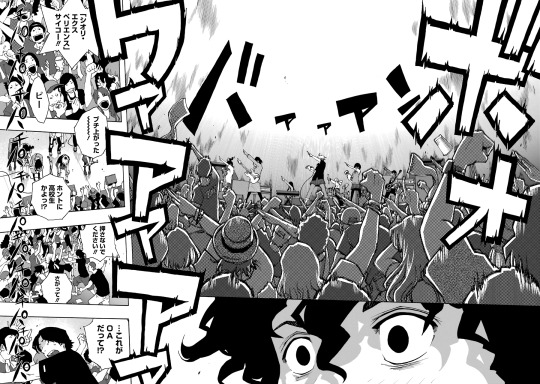
In the background of the first panel is the sound of the band, バアアアン, phonetically translated as "BA-A-A-A-N", localized as “BWAAAM”. In the foreground is the cheering of the crowd, ボオワアアア, "BO-O-WA-A-A-A" phonetically, “ROOAAR” localized. Lastly, along the side of panels 3 through 6 is applause, パチ, "PA-CHI", “CLAP”.
At a glance, this page is overwhelming. The cheering sound effect is huge, with custom text effects conveying the energy of the crowd. Worse is the clapping, which overlays multiple panels with dozens of unique partially obscured faces. This looks like a pain in the ass to redraw, but in the end I decided to do a full replacement instead of a simpler style match. With the number and size of the SFX combined with the visual density of the panels, doing a style match would result in a cluttered unreadable mess. Too much of the original artwork would be covered, and there just isn’t enough space. So, full replacement.
The redrawing process
As I’ve gained more experience, it’s been surprising to learn what constitutes a difficult redraw. You’d expect crowd shots to be the hardest, with lots of unique faces and little details, but they actually aren’t that bad IMO. More detail means more context means less guessing. Definitely a lot of work, but not difficult. Meanwhile, something like a gradient or screentone pattern which looks simple is actually a goddamn nightmare to recreate, as we'll see later.
That’s why I started my redraw for this page with the clapping. Again, this looks like it would be really hard, but looks can be deceiving. There’s a lot of clapping, yes, but the text is thin and spaced out. Whiting out the text reveals just how little artwork is actually hidden by the sound effects.
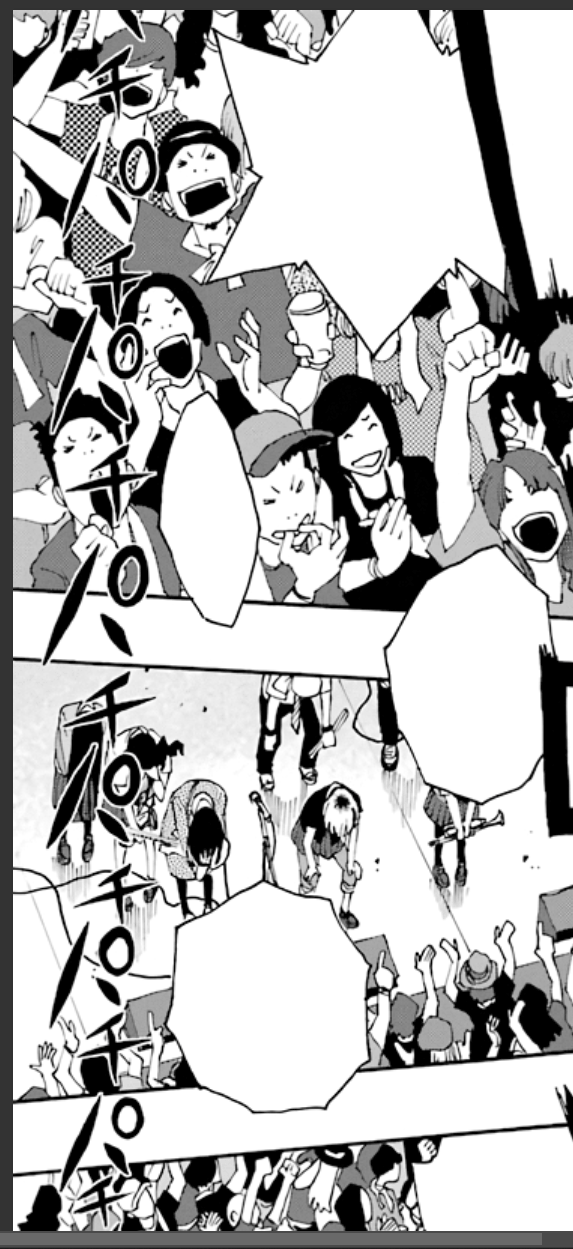
After whiting out the original text, the next step is connecting as many existing lines as I can. I do the panel and bubble borders on a separate layer since they’re simple structural elements. The artwork itself requires a bit more thought. I need to examine the original artwork carefully to avoid connecting lines that shouldn’t be connected. Context can also provide guidance where there are no lines to connect, such as the cheering guy’s hat in the first panel, or the clapping hand in the second panel. Also, when there’s lots of little SFX like this it’s easy to miss a few lines, like the box thing near the bottom of the last panel (don’t worry I catch it later).

The last step is adding in all the inking and screentones, the pattern templates which fill in the “color” to the line work. I have to go through with the clone stamp tool, collect samples from the image, and extend the pattern to fill the blank areas. This is the most annoying step in the process for me, because it requires a level of precision even beyond what’s required for the line work. Humans are pattern-recognition machines. Our brains are really good at catching tiny discrepancies, like when a section of a pattern doesn’t quite line up with the rest of it. My patch job on this panel wasn’t perfect, and you can see where I couldn’t quite line things up in areas like the guy’s checkered shirt in the first panel.
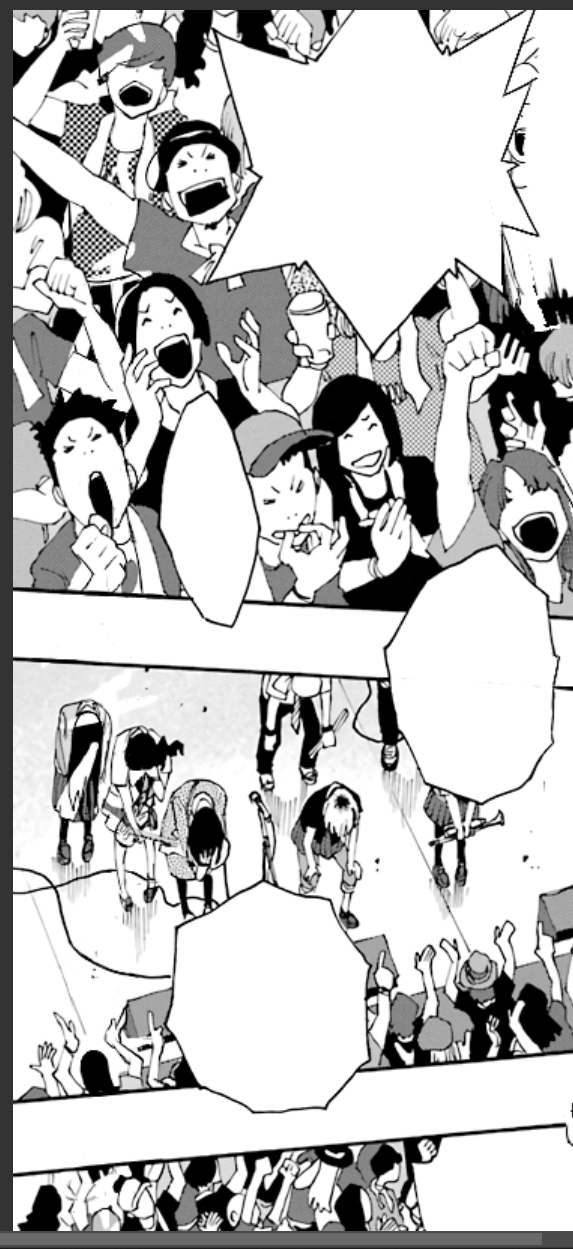
And with that, this redraw is complete! Now it’s time to insert the English translation of the sound effect.
SFX Lettering
The clapping SFX is in that same brush font I pointed out earlier, which we use JollyLodger for. There’s no real perspective things or text effects here, so mimicking the original isn’t difficult. Here’s the before and after.

This approach of fully redrawing the old SFX before inserting the new SFX only works in situations like this, where the text is small and there’s enough detail to reconstruct the image with a high level of confidence. As an SFX gets larger, like the roar of a crowd, the harder it gets to fully replace. This calls for a different approach.
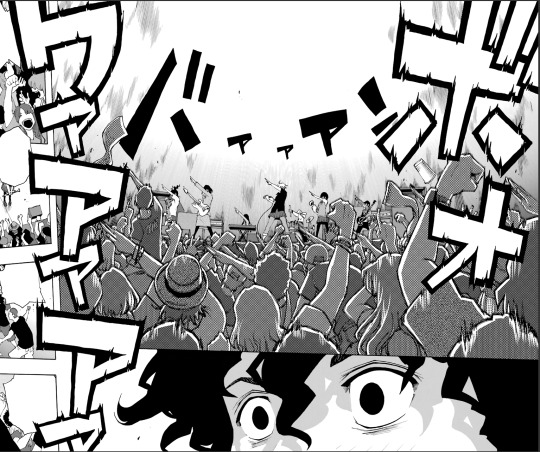
Because of the size and complexity of this sound effect, I decided to do the lettering first. This is the block font I identified earlier, which is replaced by Boogaloo. I do some basic manipulation right away, applying a black outline and distorting the text to create the same perspective effect as the original. The SFX in this series are subtly three-dimensional, and the replacement text needs to be in the same orientation to sell the effect.
I’m also being careful with my placement here, doing my best to align the new text with the old. This will be important later.

Next we need to recreate the distortion effect. Photoshop has functionality to mimic this kind of effect, but I opted to do it manually. Osada (the mangaka) does all these layouts, SFX and all, on paper. The original effect was hand drawn, so the replacement effect is hand drawn.
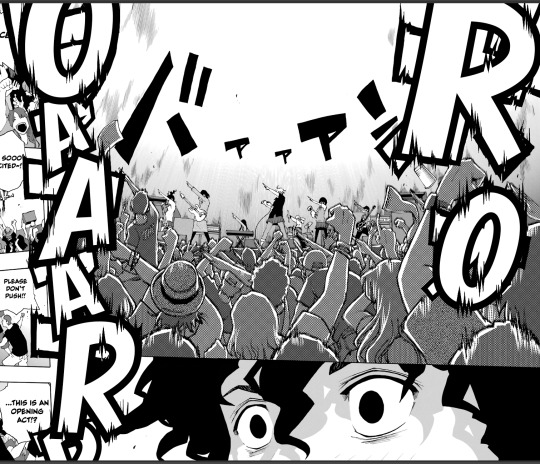
The lettering for this effect is now complete, and we can begin the redraw process. Since we already have the letters in place, we have the advantage of knowing exactly where a redraw is needed, turning what would otherwise have been an enormous replacement into a minor patch job. From here, it’s the same process as the clapping SFX: Raw, Blank, Line, Fill.
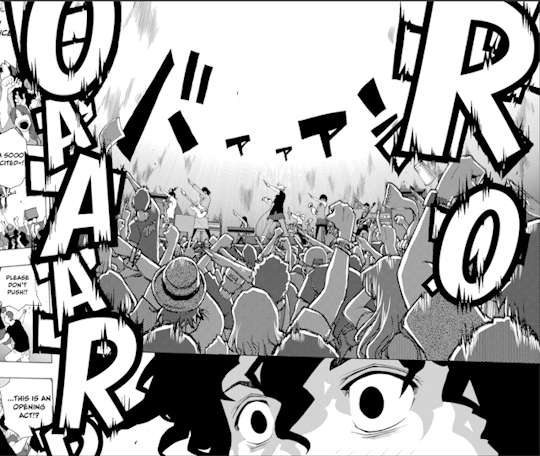
Minor sidebar: translating Japanese sound effects presents an interesting and incredibly niche problem. The katakana symbol オ is translated phonetically as “o”. The problem with that is that when you’re replacing a オ with an O in a sound effect, the hole of the O is positions right on the center of the オ. This makes オ really annoying to redraw. Every O turns into a little window of totally new art, with barely any reference points to draw from. It violates the principle of invisibility, but there’s really no way around it. You can see I got a little lazy here, and clonestamped a different section of the crowd into the hole. As long as I don’t draw attention to it nobody will notice. I hope.
Sidebar over. Just for fun, here’s the before and after for the whole page.
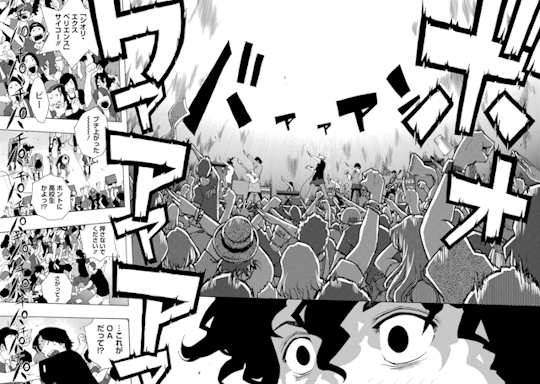
Closing thoughts
So that’s what it takes to do the sound effects for one page of Shiori Experience. This page alone took me multiple days to complete, and it wasn’t even the most complicated page in this chapter. It isn’t why our releases take so long (that can be laid at the feet of staffing and scheduling issues), but hopefully I’ve given you a sense of how much work goes into each new chapter.
This chapter would have taken even longer without the help of Adi and Bangistus, who pitched in on a lot of the smaller SFX. Up until now the lettering of this series has been a solo show, Toast all the way down. Now that Adi and Bang are on the team I’m still keeping most of the big pages for myself, but being able to toss to the others when I get overwhelmed is going to be invaluable. Hopefully I can rely on them in the future as well, there’s some big things coming down the pipe
This series is a labor of love. Sometimes frustrating, often exhausting, but always worth it. I owe this series a lot, and I hope it shows in the work I put into it. I think it would be fun to do more behind the scenes process content like this, so maybe keep an eye out for that in the future.
Lastly, just as a status update, #dropout is not dropping Shiori Experience. We have a temporary translator who’s helping us put together Chapter 65, which will be coming out Eventually™. Not as long as last time, but like always don’t hold your breath. We’re not sure what will happen after 65 drops. We’re still desperately hiring for a main translator, seriously if you know anybody please hit me up.
That’s all from me. Take care y’all.
237 notes
·
View notes
Text
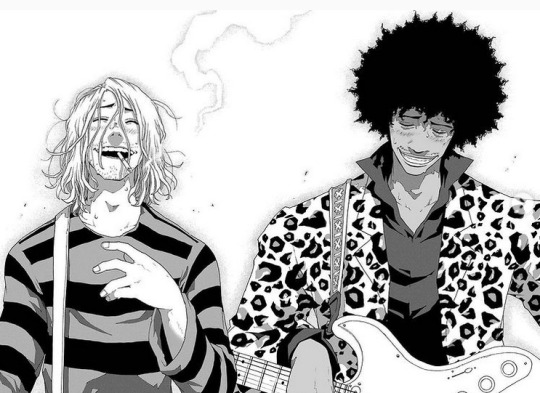
#shiori experience#seeing this shot of Kurt and Jimi Hendrix#made me unexpectedly emotional#manga#kurt cobain#to read#nirvana#jimi hendrix
77 notes
·
View notes
Text
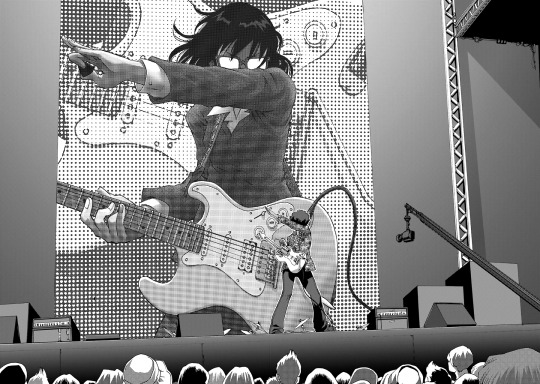
shiori experience is so fuckking good
17 notes
·
View notes
Text
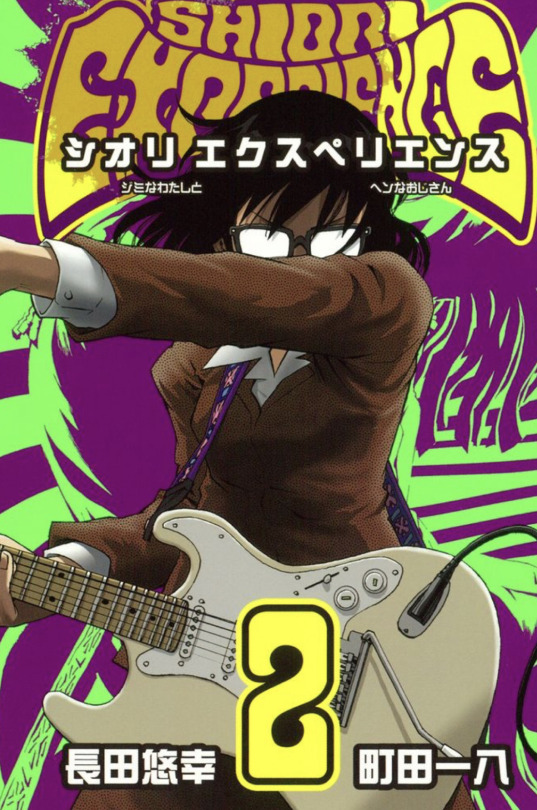





shiori experience
#anime icons#anime aesthetic#anime layouts#anime moodboard#action anime#manga panel#manga aesthetic#manga packs#manga page#manga and stuff#manga coloring#manga series#colored manga#shiori experience#jiminawatashitohennaojisan#shiorihonda#jimi hendrix#akame Isuzu#comedy anime#seinen#music anime#manga art
44 notes
·
View notes
Text

mitsuoka & isuzu
#drawing#shiori experience#they are my favorite kids in the band 👍#kind of wanted to see how I changed by drawing them again….
29 notes
·
View notes
Text
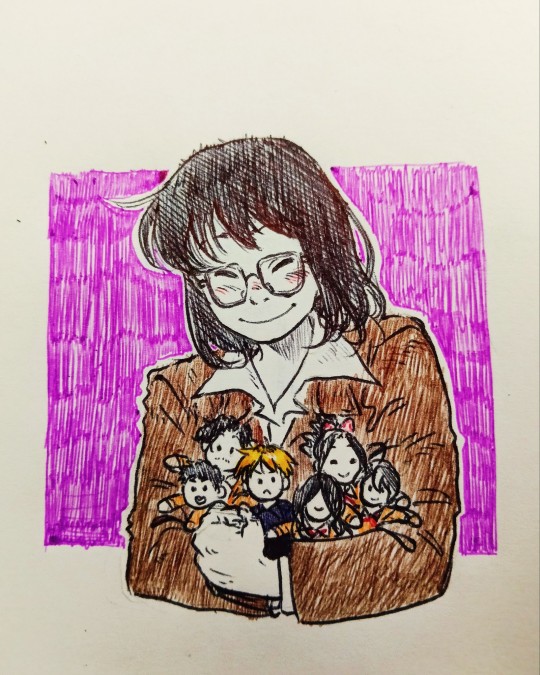
Little Shiori doodle I did.
14 notes
·
View notes
Text

Manga (and one webcomic) 3x3
#the voynich hotel#you and i are polar opposites#lotta svard#golden kamuy#yokohama kaidashi kikou#girls' last tour#shiori experience#shoujo jiten#end of goldfish kingdom
22 notes
·
View notes
Note
Hi! Moi! I’m fishbred who deeply loves your art!!!! Firstly, thanks for posting awesome art!! Your art is soooo fantastic that I can’t express how much I love it. I feel really happy and jump for joy every time I see your new post…!!😭😭💕💕
So, Could I request for you…? I'd really really like you to request the Jimi Hendrix experience, please ...! I would like you to draw even just one of the members of the Jimi Hendrix Experience… (Jimi, Noel, or Mitch)

Also, time is unlimited! Yeah, I don’t want to push my request on you so hard. I hope you take care of yourself and stay healthy!!
Love ya!👍👍👍👍
Thank you! I don't know what to say so here is my honest reaction:

Have to say I love Jimi Hendrix Exp too but Jimi is too hard for me to draw 😭😭😭 (I know you didn't ask me must to draw him but I take this occassion as a chance to draw Jimi cause he's my hotty guitar god 🥺🫶❤️).
And I captured Noel and Mitch's features very well but Jimi's is 💀. But at least I tried my best and got a pretty good looking Jimi finally. So here you are 🫶❤️❤️❤️ (It's kinda messy so excuse me for that 🥲)
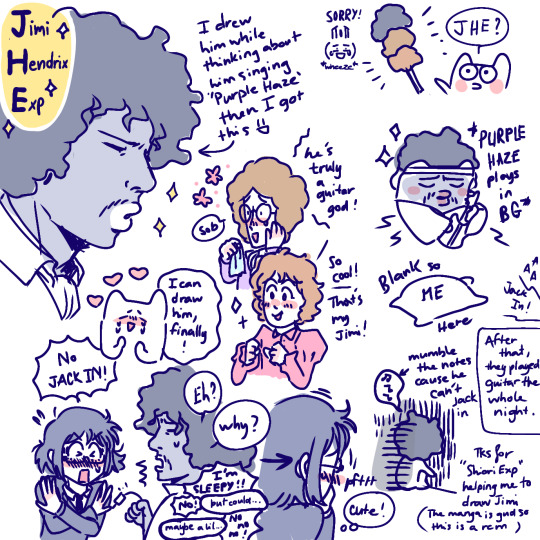
#the jimi hendrix experience fanart#the jimi hendrix experience#jimi hendrix#mitch mitchell#noel redding#request#my art#shiori experience#thank for shiori exp helping me drawing him better 🙇♀️#it's a good manga too 👍 give it a try#alright during the time I'm offline I've got into Britpop including Blur and Pulp#gonna post their art later 🥰 see ya
20 notes
·
View notes
Text
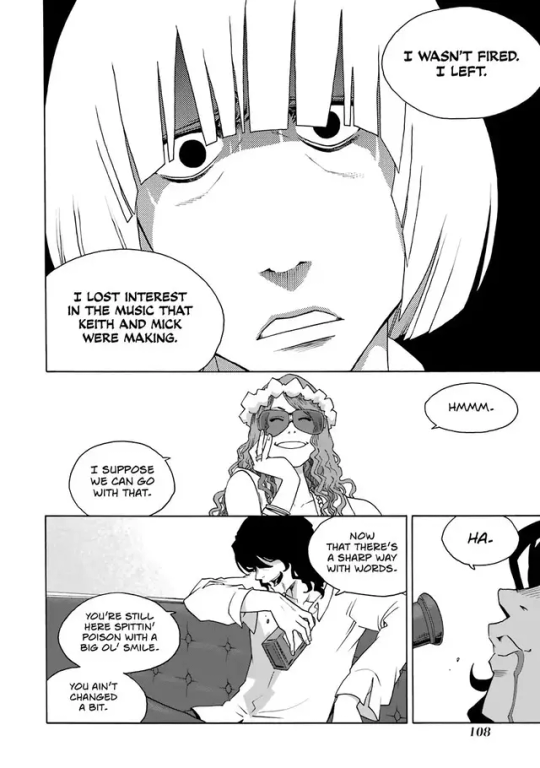
More from The Shiori Experience manga. Bit of drama as the 27 Club (Brian Jones, Janis Joplin, and Jim Morrison) discuss what really happened to Brian.
#shiori experience#manga#27 club#japanese manga#Brian Jones#Janis Joplin#Jim Morrison#The Doors#The Rolling Stones
7 notes
·
View notes
Text
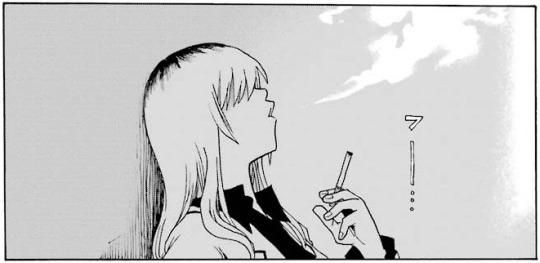
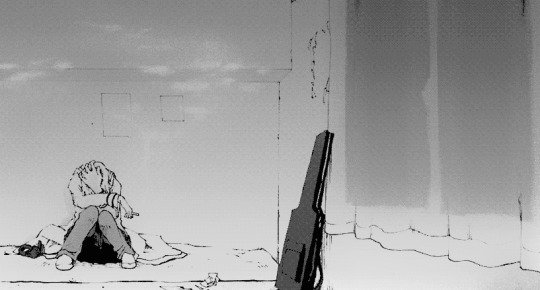
Shiori ExperienceYuko Osada Kazuya Machida
#shiori experience#yuko osada#kazuya machida#manga#mangacap#music#supernatural#ghost#school life#satsuki meguro#smoking#monochrome
8 notes
·
View notes
Text
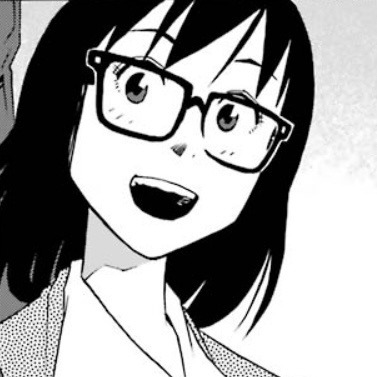
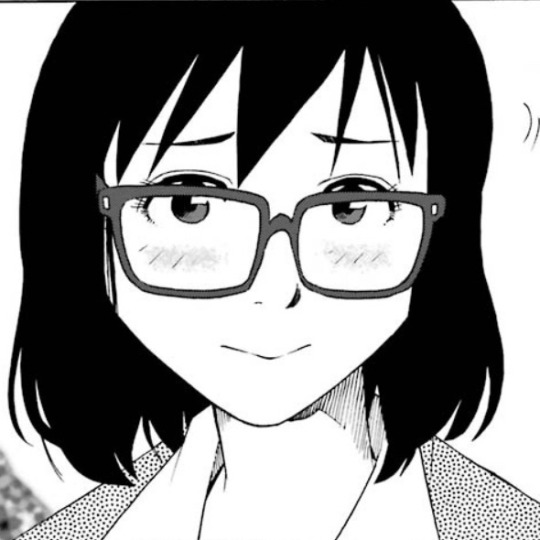


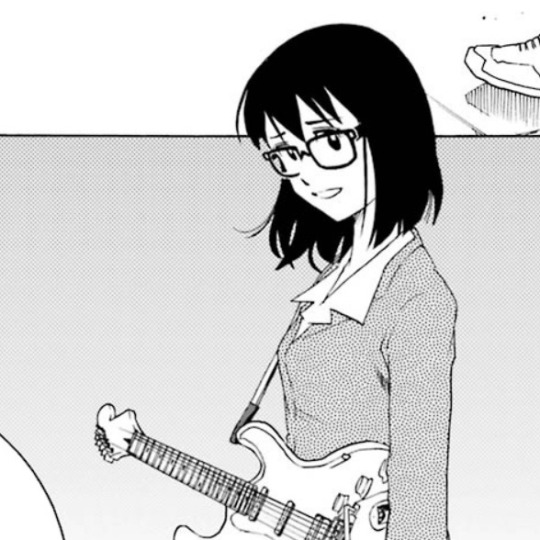

Shiori Honda from Shiori Experience!! Realized there were barely any icons so i made some for her lol
29 notes
·
View notes
Photo

Shiori Experience - Ch. 64
So as the endcard says, we’re looking for a new translator to fill the main TL role on this project. On the slim chance that any of y’all are fluent in Japanese and want to see this series continue, hit me up.
92 notes
·
View notes